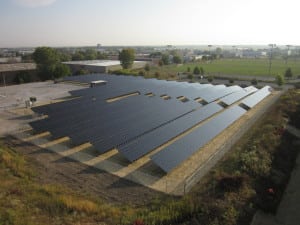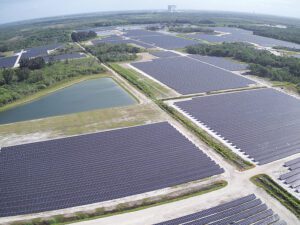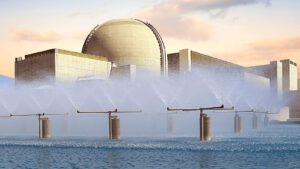DOE
-
News
Infrastructure Act Power Technology Demonstrations DOE’s Newly Dedicated Office Will Manage
As required by the Bipartisan Infrastructure Act, the U.S. Department of Energy (DOE) on Dec. 21 launched a new office—the Office of Clean Energy Demonstrations—to “supercharge” its work to demonstrate hydrogen, carbon capture, energy storage, and advanced nuclear technologies. The new office will leverage $21.5 billion of the combined $62 billion allocated to the DOE […]
-
Nuclear
DOE Begins Fleshing Out Availability of Advanced Nuclear Reactor Fuel
The Department of Energy (DOE) has issued a request for information (RFI) on a planned temporary federal program to ensure enough high-assay low-enriched uranium (HALEU) will be available to jumpstart deployment of a new fleet of advanced nuclear reactors. Comments received over the next month in response to the DOE’s Dec. 14–issued RFI will inform […]
Tagged in: -
News
New Materials, Efficiency Upgrades Advancing Solar Technologies
The growth curve for solar power continues its upward trajectory, thanks to technologies such as perovskites, heterojunction solar cells, and energy storage systems designed to complement rooftop solar. New
-
Nuclear
DOE Revives Consent-Based Siting Process for Commercial Spent Nuclear Fuel Disposal
Potentially jumpstarting long-paralyzed efforts to address the federal management of spent nuclear fuel (SNF), the U.S. Department of Energy (DOE) on Nov. 30 issued a request for information (RFI) that could determine where the agency will temporarily consolidate and store spent fuel from nuclear reactors across the nation. Under the RFI, the DOE is seeking […]
Tagged in: -
Nuclear
Coal Plant Site Unveiled for 500-MW Natrium Advanced Nuclear Pilot
A site at PacifiCorp’s retiring 600-MW coal and gas–fired Naughton Power Plant in Kemmerer, Wyoming, will house the Natrium demonstration, a pioneering commercial-scale 500-MW project that will pair a 345-MW sodium-cooled fast reactor with a molten salt-based energy storage system. Project stakeholders on Nov. 16 unveiled the site for the federally backed demonstration, which will validate […]
-
Renewables
Five Challenges to Meeting Biden’s Ambitious Solar Energy Goals
The U.S. Department of Energy (DOE) in September released a study detailing the significant role solar power could play in decarbonizing the nation’s power grid, and reducing the country’s reliance on
Tagged in: -
Gas
The POWER Interview: Pioneering STEP Supercritical Carbon Dioxide Demonstration Readying for 2022 Commissioning
Construction of the 10-MWe Supercritical Transformational Electric Power (STEP) pilot plant, a public-private collaboration to demonstrate and test supercritical carbon dioxide (sCO2) power generating technology, is making marked progress toward a mid-2022 startup date. Attendees from Experience POWER, HydrogeNext, and the Distributed Energy Conference, three of POWER’s annual in-person events, which took place last week in […]
-
News
DOE Envisions Future Grid’s Transformation into a ‘Network’
The grid must accommodate more inverter-based generation and adequately handle the bi-directional flow of electricity, but it must also apply alternative grid configurations and coordinate planning and operations across multiple participants and jurisdictions. That’s the vision Michael Pesin, deputy assistant secretary for the Department of Energy’s (DOE’s) Advanced Grid Research and Development division, outlined in […]
-
Hydrogen
Power-to-Power Hydrogen Demonstration Involving Largest U.S. Nuclear Plant Gets Federal Funding
Palo Verde Generating Station, a 4-GW nuclear power plant in Arizona, is gearing up to produce hydrogen from a low-temperature electrolysis (LTE) system, and that hydrogen will then be used to fuel a natural gas–fired power plant owned by Arizona Public Service (APS). The innovative power-to-power demonstration led by PNW Hydrogen is set to receive […]
-
Legal & Regulatory
Avoiding an ‘American Nightmare’—Cybersecurity Initiatives in the Power Sector
Cyberattacks on the U.S. energy system threaten our national security and way of life. While the sources of such risks may be debatable, the threats are real and the potential consequences are grave. Former










